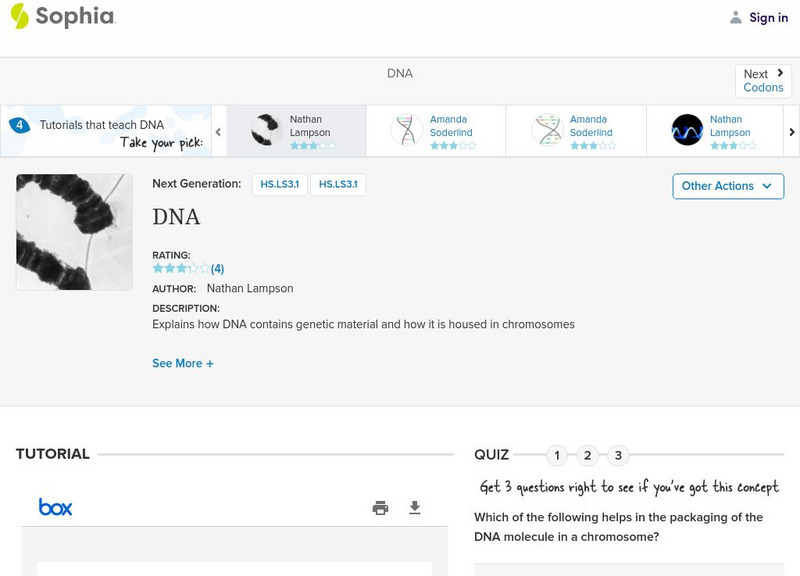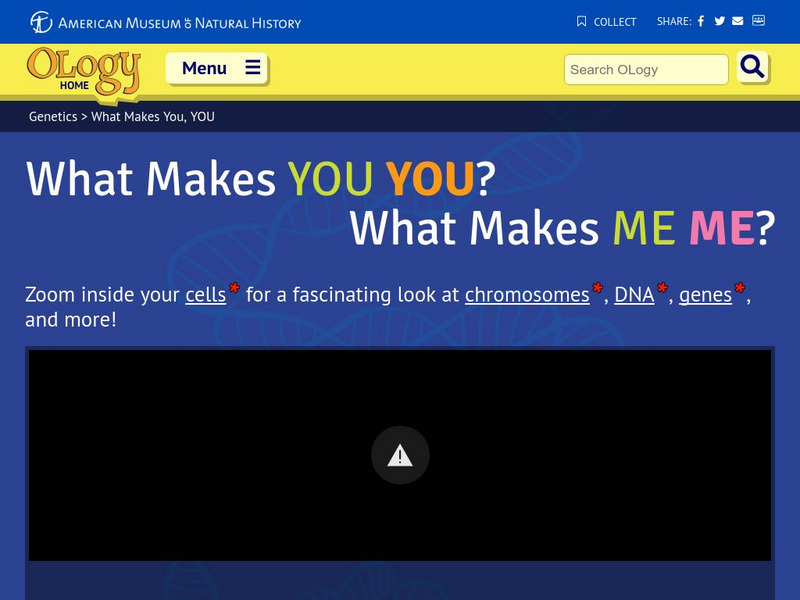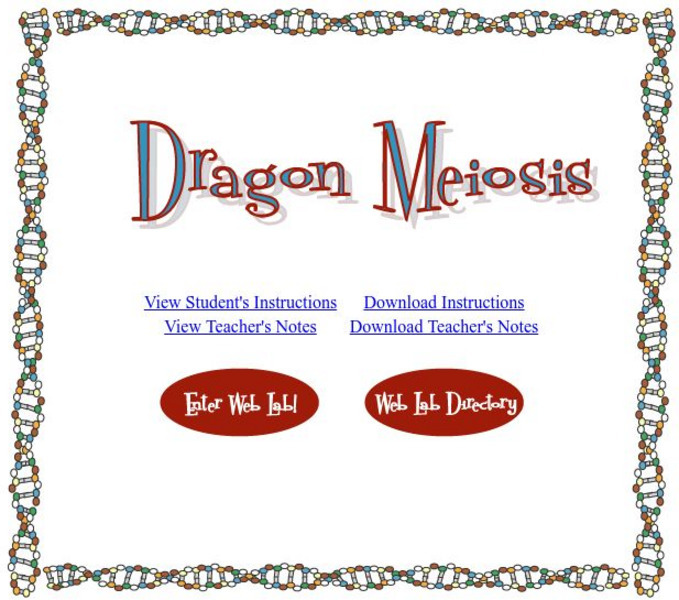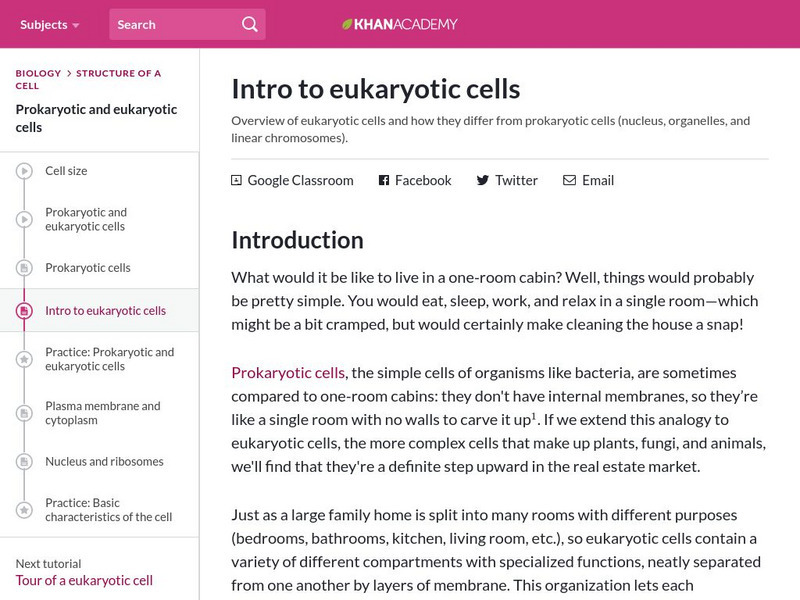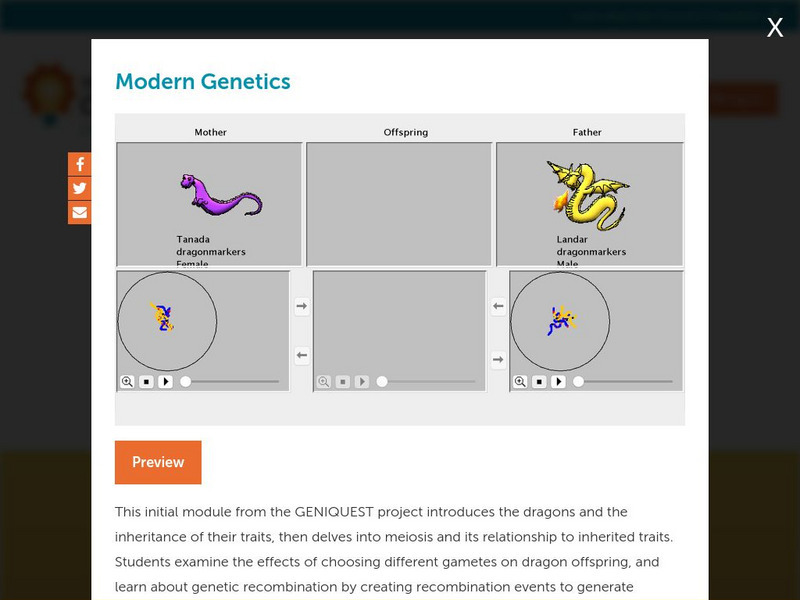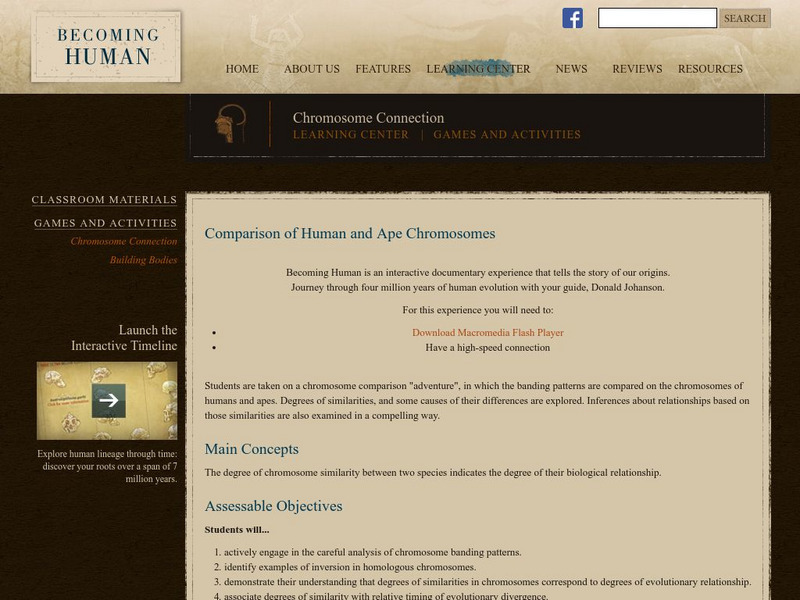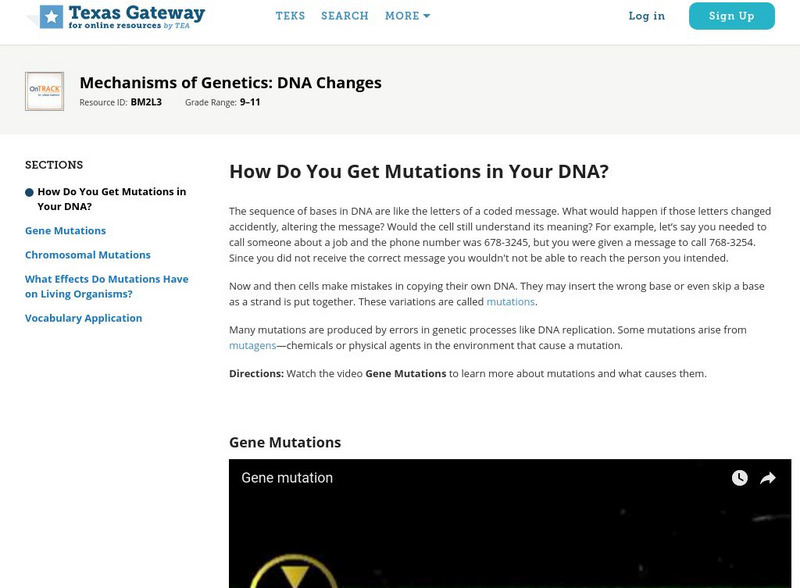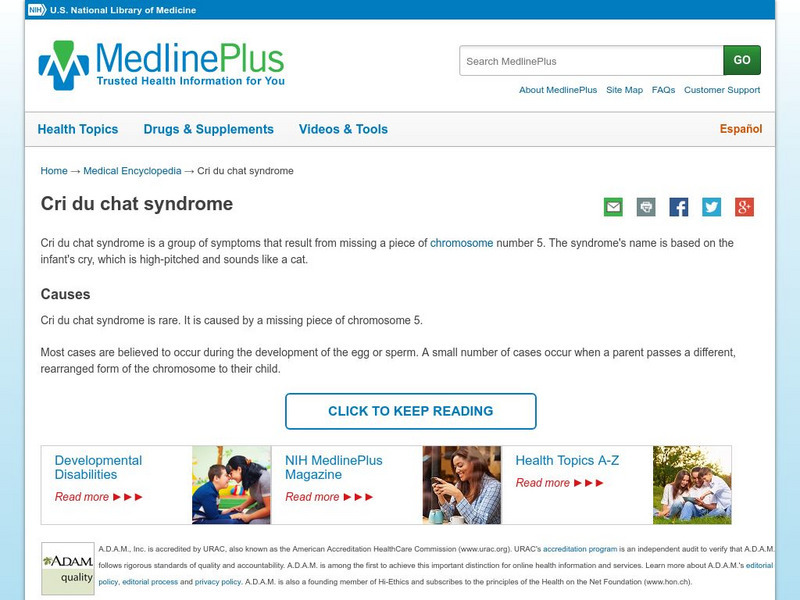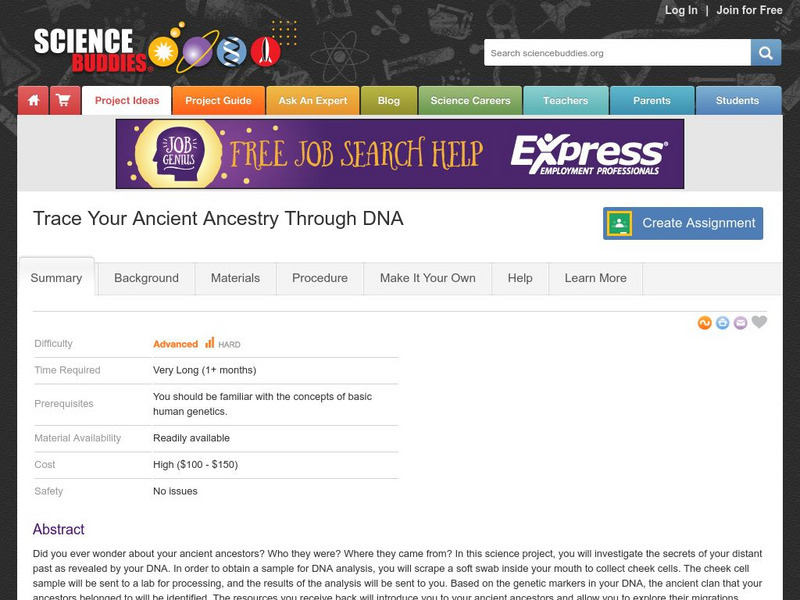Sophia Learning
Sophia: Dna: Lesson 1
Explains how DNA contains genetic material and how it is housed in chromosomes. This lesson is 1 of 5 in the series titled "DNA."
Sophia Learning
Sophia: Dna: Lesson 4
Explains how DNA contains genetic material and how it is housed in chromosomes. This lesson is 4 of 5 in the series titled "DNA."
American Museum of Natural History
American Museum of Natural History: O Logy: What Makes You You? What Makes Me Me?
Simple animation explains the function of chromosomes, genes, and DNA by letting you zoom into a cell nucleus for a closer look.
Mocomi & Anibrain Digital Technologies
Mocomi: What Is Heredity?
Defines heredity, DNA, and chromosomes and discusses Gregor Mendel, the "father of genetics".
PBS
Pbs: Never Say Die: The Clock of Life
This site from the PBS production, Scientific American Frontier "Never Say Die", includes a section entitled "The Clock of Life". It provides a discussion of cell death through shortening of the telomere. A good class activity included.
BiologyWise
Biology Wise: What Is a Haploid Cell?
Explains what haploid cells are and the role they play in reproduction.
PBS
Pbs Learning Media: Mitosis and Meiosis Compared
Meiosis is used to make sperm and egg cells. During meiosis, a cell's chromosomes are copied once, but the cell divides twice. During mitosis, the chromosomes are copied once, and the cell divides once. For simplicity, cells are...
Education Development Center
Education Development Center: Dragon Meiosis
Animated activity offers a simple look at meiosis and the production of gametes for reproduction. The stages are well animated and then students can put the gametes together to make baby dragons to illustrate how different they can be....
Concord Consortium
Concord Consortium: Stem Resources: Meiosis
Why don't you look exactly like your brother or sister? Meiosis involves the reducing of genetic material and chromosome shuffling which results in different genetic combinations. In this activity, students will view a computer model of...
University of Arizona
Biology Project: Karyotyping Activity
Try your hand at matching chromosomes to complete the karyotype in this simulation. Simulation contains karyotyping activity for three different patients and students can explore whether those patients have any genetic disorders.
Harvard University
Harvard University: Neurofibromatosis Clinic
This explanation of the two forms of neurofibromatosis (NF)reveals the chromosomal locations of NF genes and their related proteins. Illustrated.
Khan Academy
Khan Academy: Biology: Structure of a Cell: Introduction to Eukaryotic Cells
An article reviewing the structure of eukaryotic cells. Learn how the cells have a nucleus, organelles, and chromosomes.
Concord Consortium
Concord Consortium: Stem Resources: Modern Genetics
Try your hand at mating dragons to learn about genetic recombination, meiosis, and inherited traits. Understand how chromosomes separate in meiosis with a science animation. Then change alleles for the dragons to see what happens to...
Other
Becoming Human: Comparison of Human and Ape Chromosones
Have you ever wondered how closely we are related to other primates? Join this chromosone comparison adventure to compare the banding patterns of human chromosones to those of apes.
Bio Topics
Bio Topics: Cell Division and Chromosomes
An information sheet where students fill in the appropriate words to complete the page on cell division. Also included on page is diagrams of binary fission and cell division.
Cold Spring Harbor Laboratory
Dna From the Beginning: Higher Cells Have Ancient Dna
Eukaryotic cells have separate DNA from mitochondria and chloroplasts which indicates that they were once primitive cells on their own. This multimedia article includes animations, pictures, video, biographical information, and quiz...
Other
Angelman Syndrome Foundation
This comprehensive site offers Angelman Syndrome information for doctors and parents. The foundation contends that this syndrome, presumed rare, is present in thousands of children misdiagnosed with cerebral palsy, autism, or other...
US National Library of Medicine
Medline Plus: Klinefelter's Syndrome
Dynamic site explores Klinefelter's Syndrome. Be sure to check out link to left for recent research articles.
Texas Education Agency
Texas Gateway: Mechanisms of Genetics: Dna Changes
Given illustrations or partial DNA sequences, students will identify changes in DNA and the significance of these changes.
US National Library of Medicine
Medline Plus: Cri Du Chat Syndrome
This site has information on causes, symptoms, treatment, support groups, expectations and prognosis related to Cri-du-Chat, a genetic syndrome. Information is objectively presented and fairly thorough. Information is provided by A.D.A.M.
PBS
Pbs Learning Media: Like Mother Like Son
Students are asked to explain some of the inherited characteristics found in particular pairs of animals.
Science Buddies
Science Buddies: Trace Your Ancient Ancestry Through Dna
In this science project, you will investigate the secrets of your distant past as revealed by your DNA. In order to obtain a sample for DNA analysis, you will scrape a soft swab inside your mouth to collect cheek cells. Based on the...
Estrella Mountain Community College
Estrella Mountain Community College: Plasmids
This site is part of an "Online Biology Book" and contains excellent text and visuals. Discusses F and R plasmids and includes great illustrations. Well organized and clear.
Estrella Mountain Community College
Estrella Mountian College: Introduction to Genetics
This site explains genetic beliefs before and after Mendel, and also includes a section on Mendel himself and his experiments, entitled, "The Monk and his Peas".
Other popular searches
- Chromosome Mutations
- Chromosomes and Genes
- Chromosome Replication
- Dna, Genes & Chromosomes
- Chromosome Mapping
- Chromosome Structure
- Cell Division 23 Chromosomes
- Sex Chromosomes
- Chromosomes and Inheritance
- Genome Chromosomes
- Sex Linked Chromosomes
- Homologous Chromosomes



